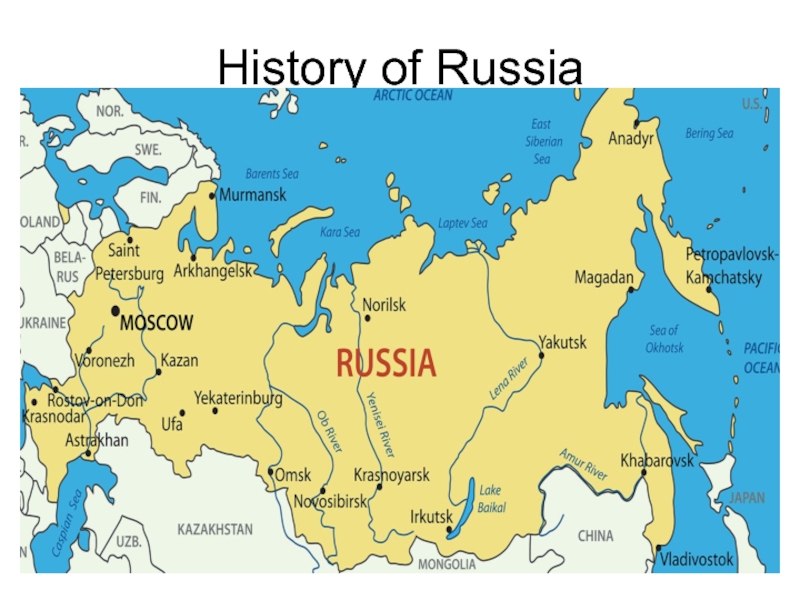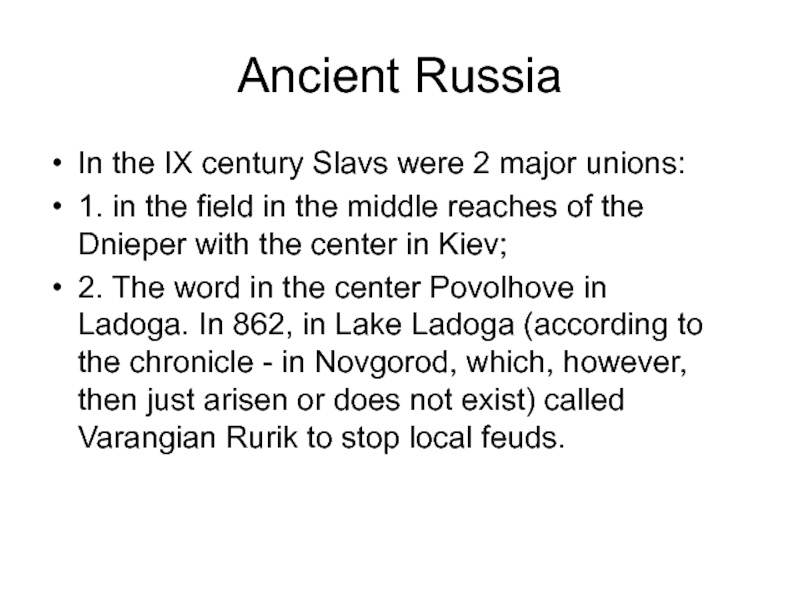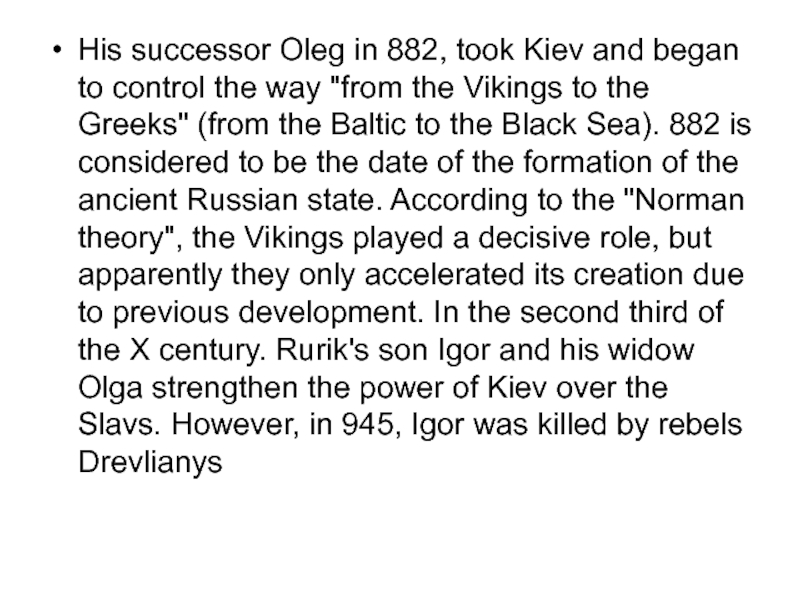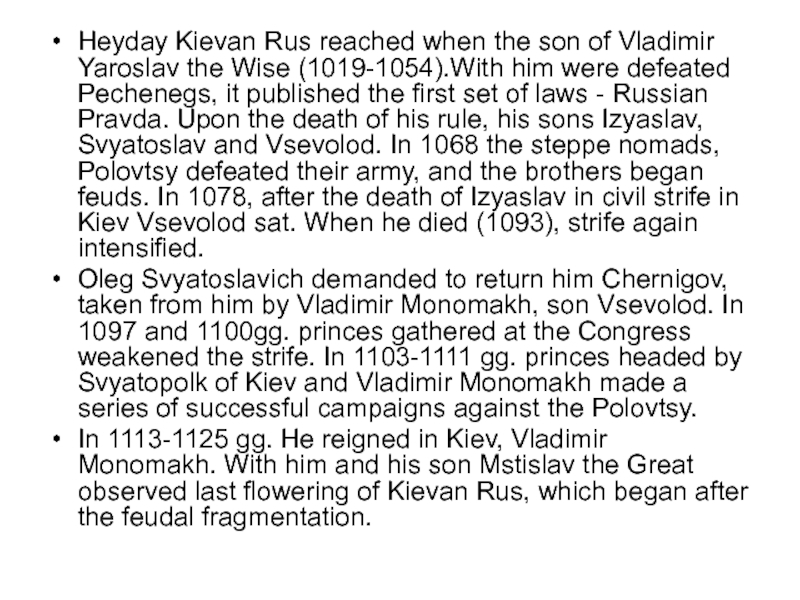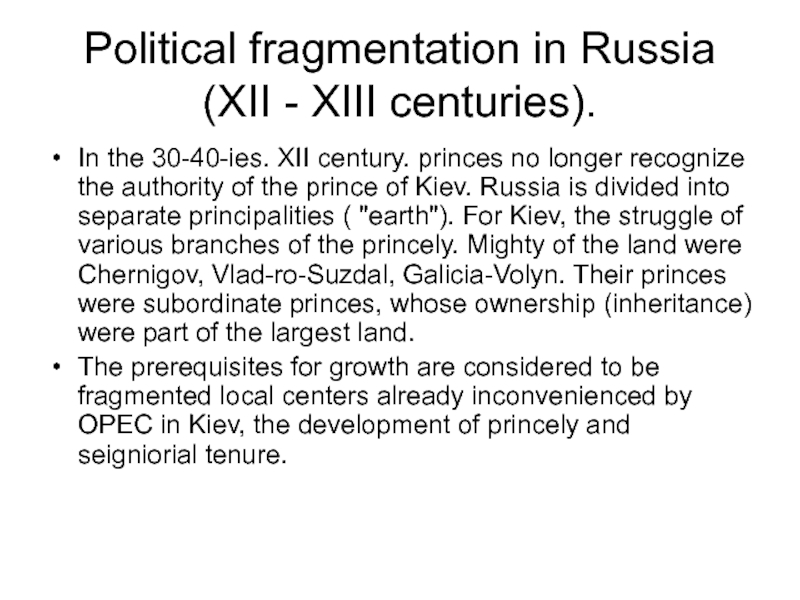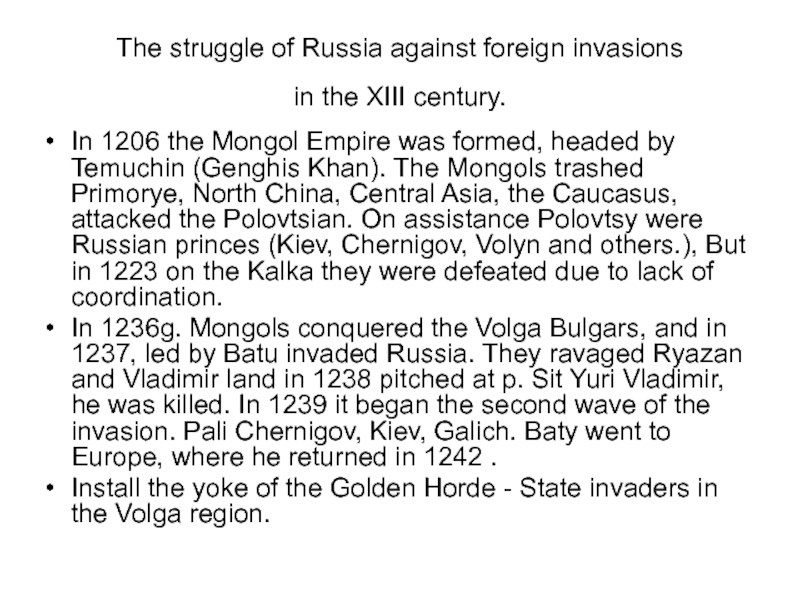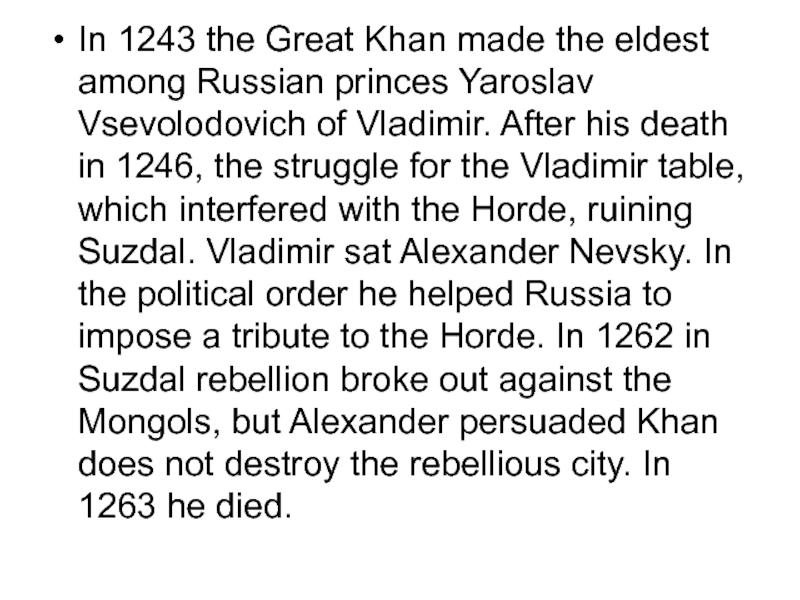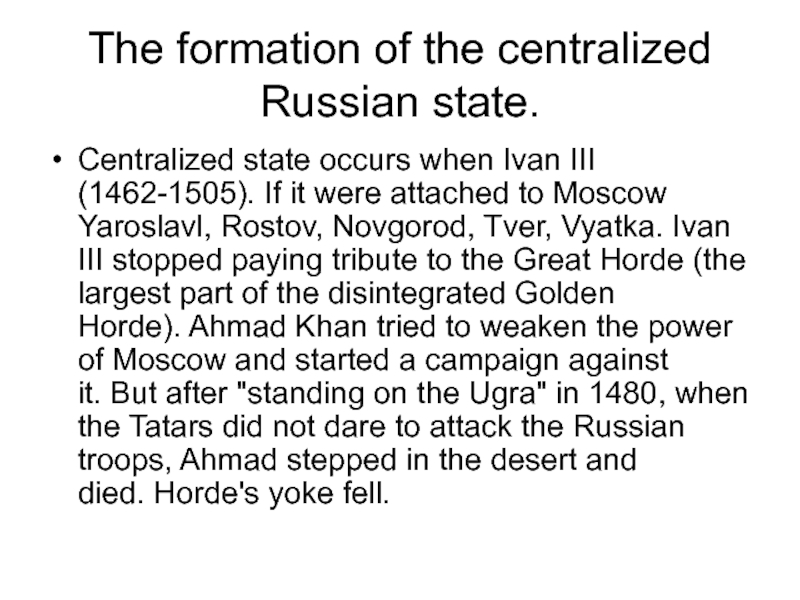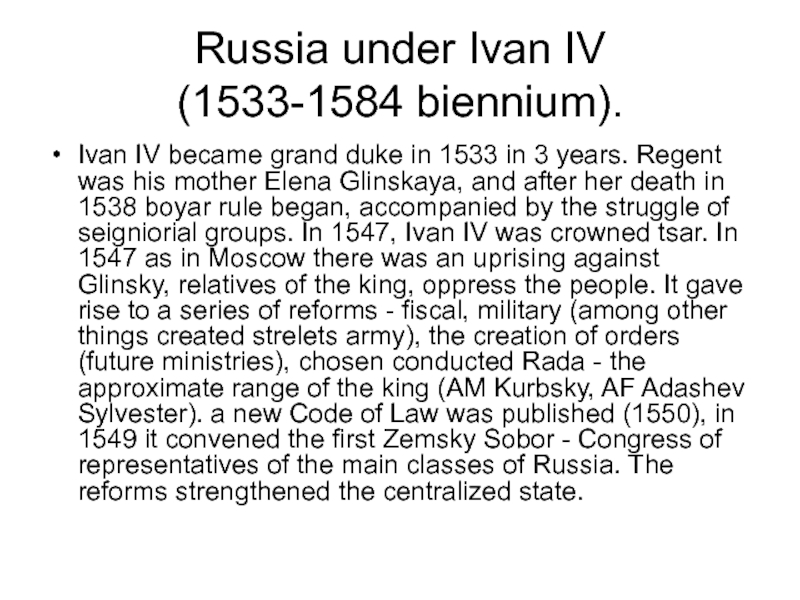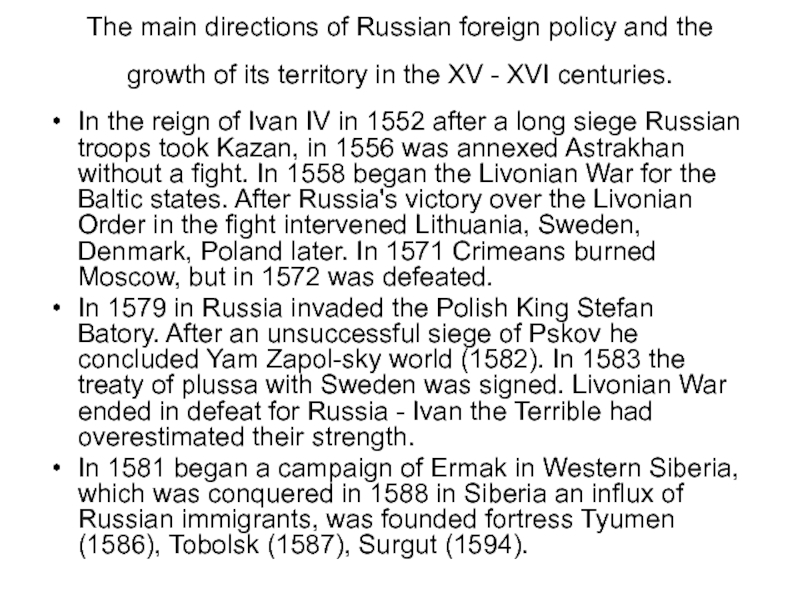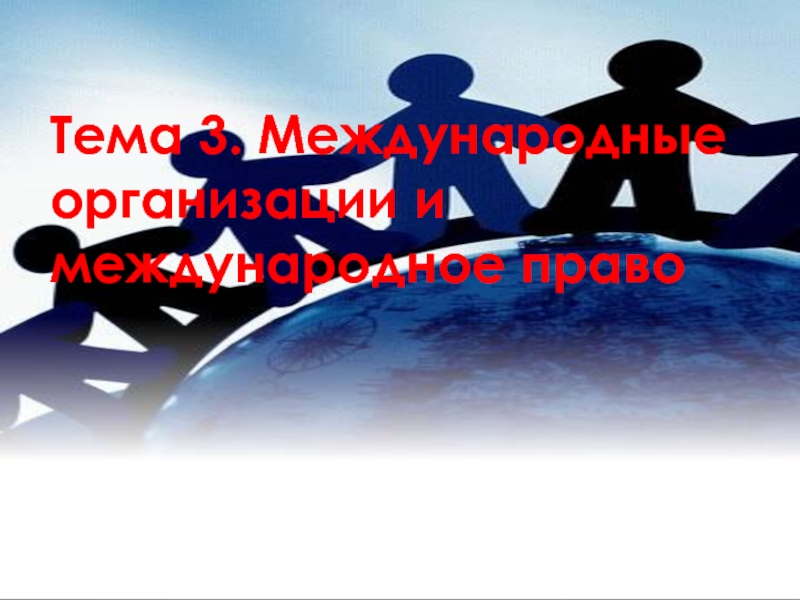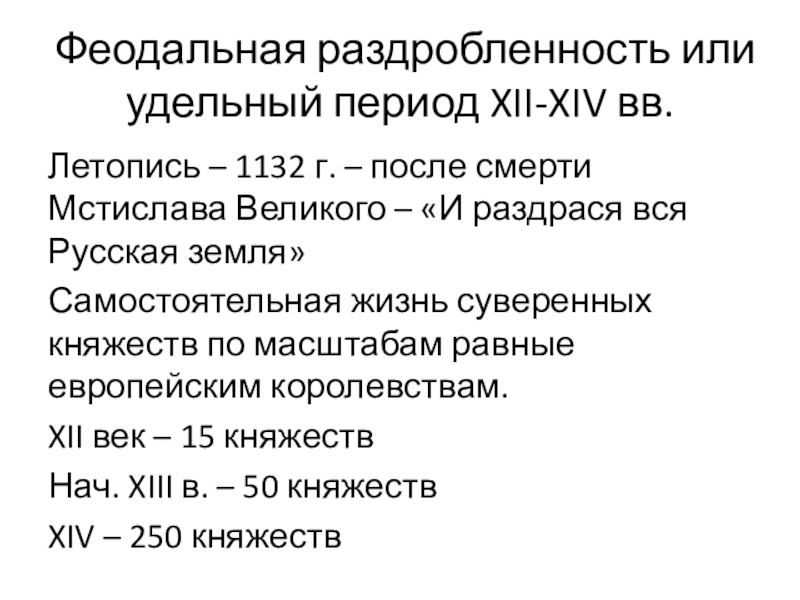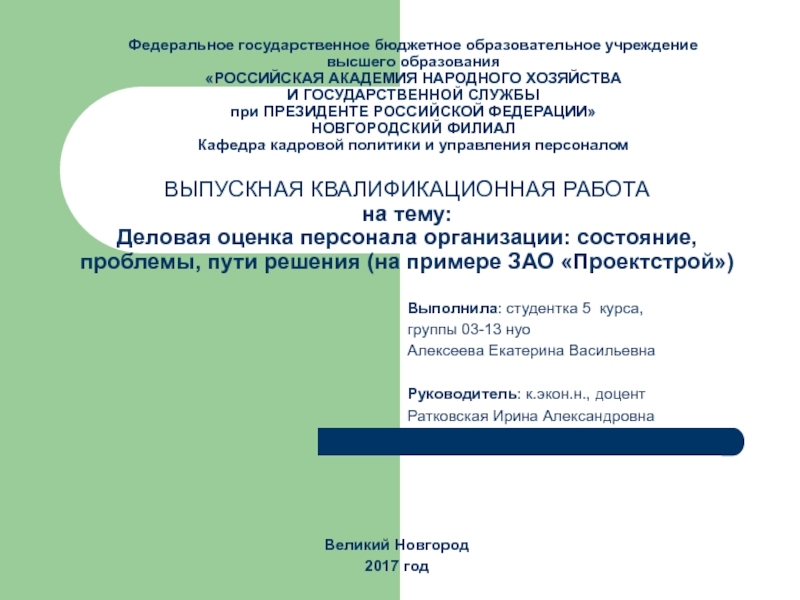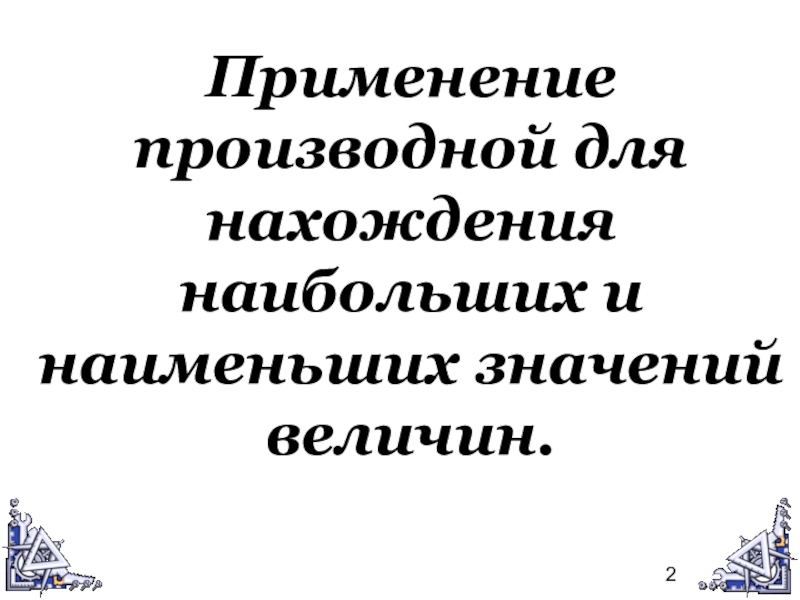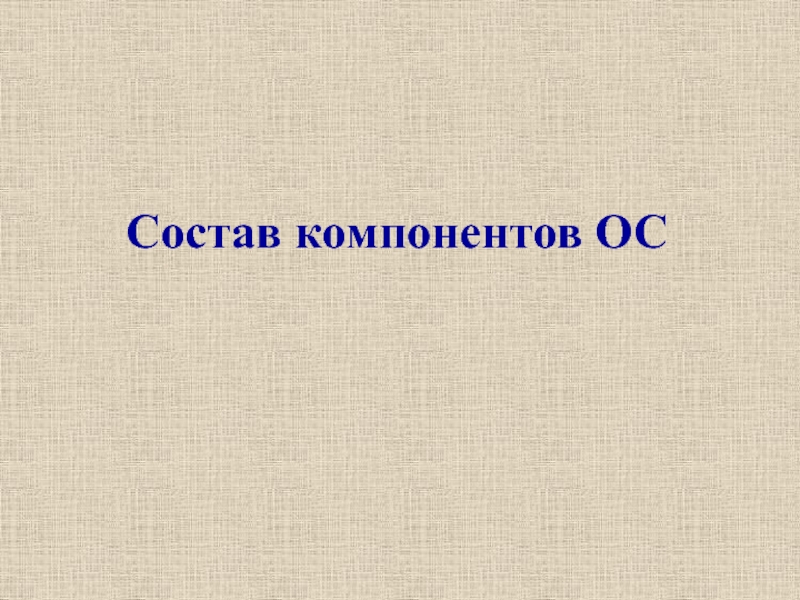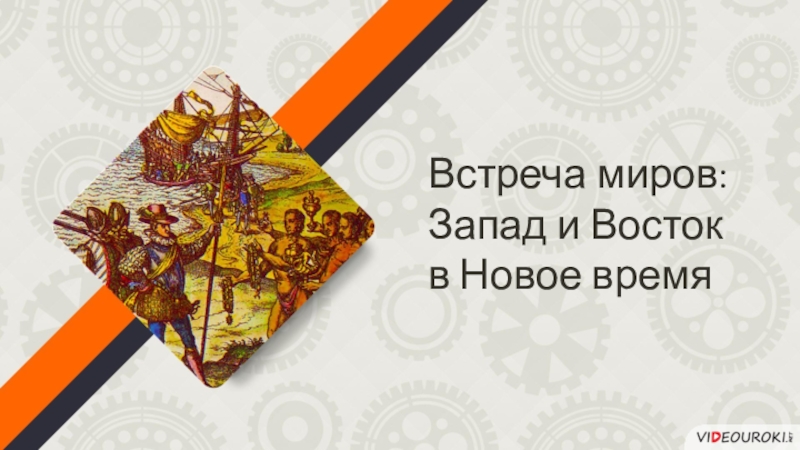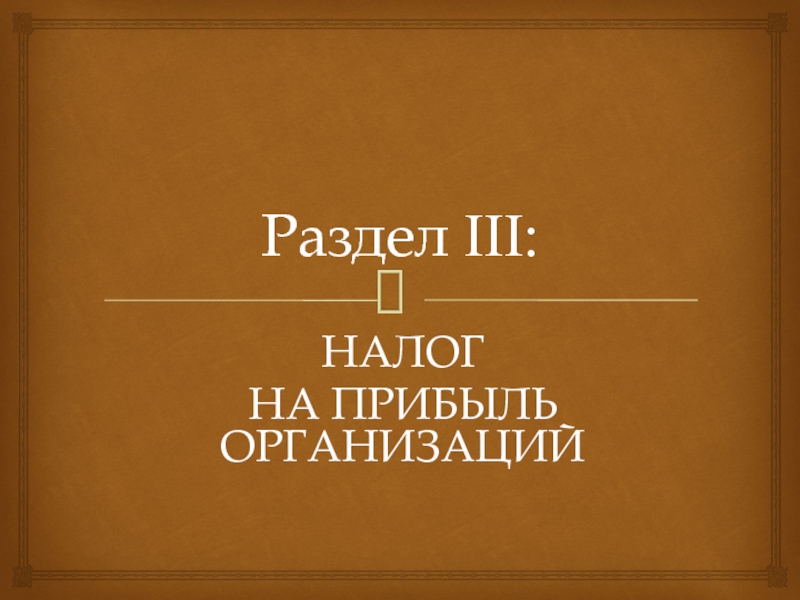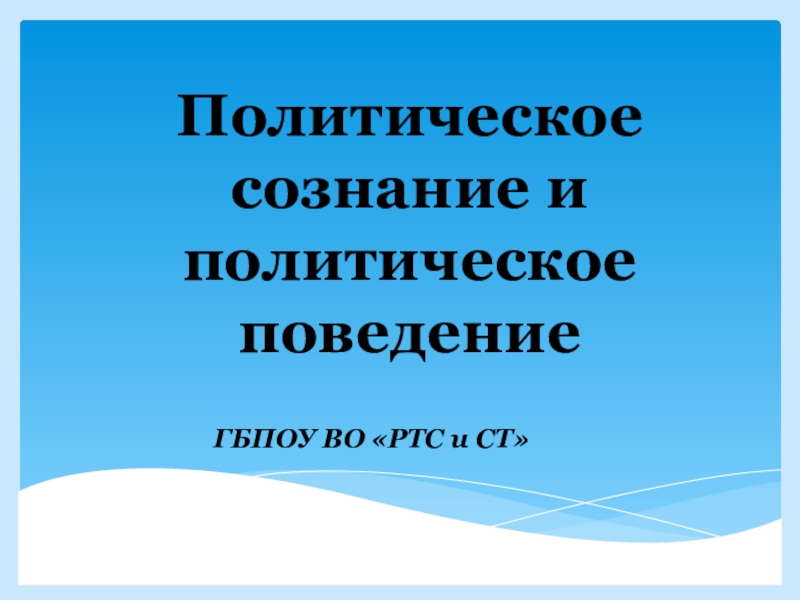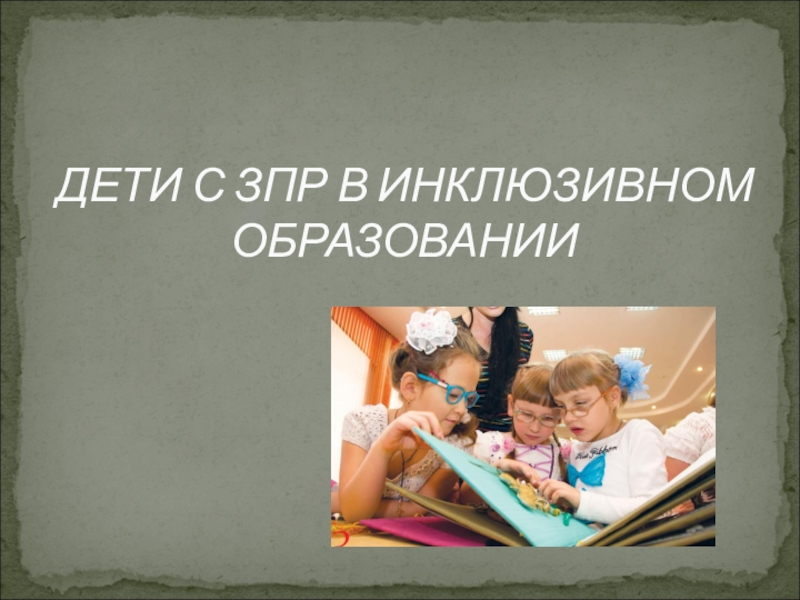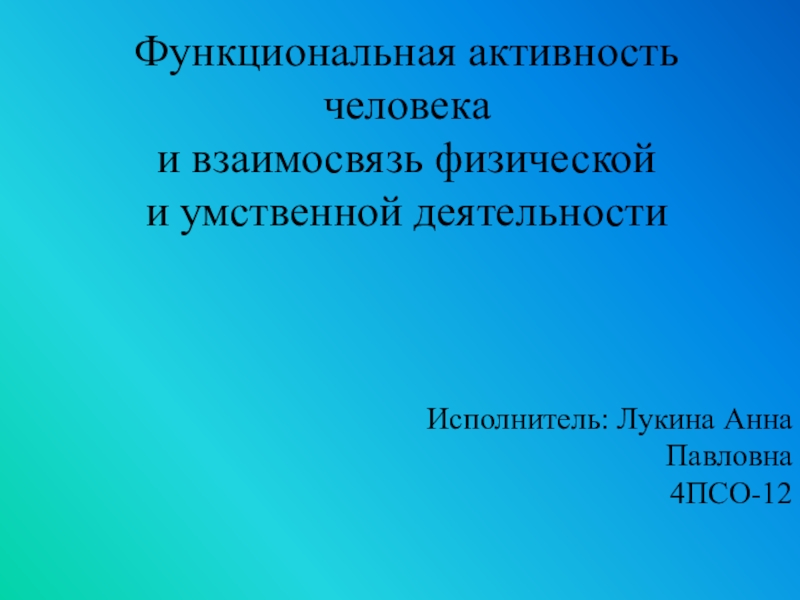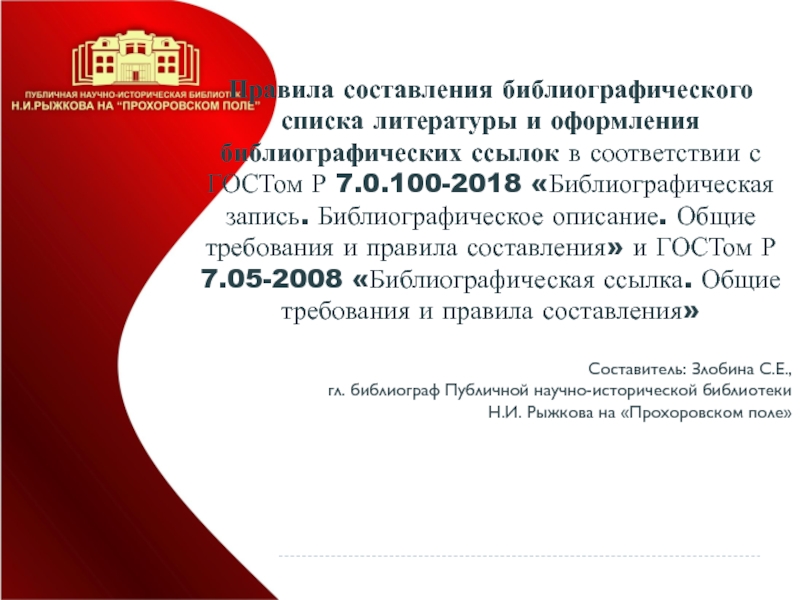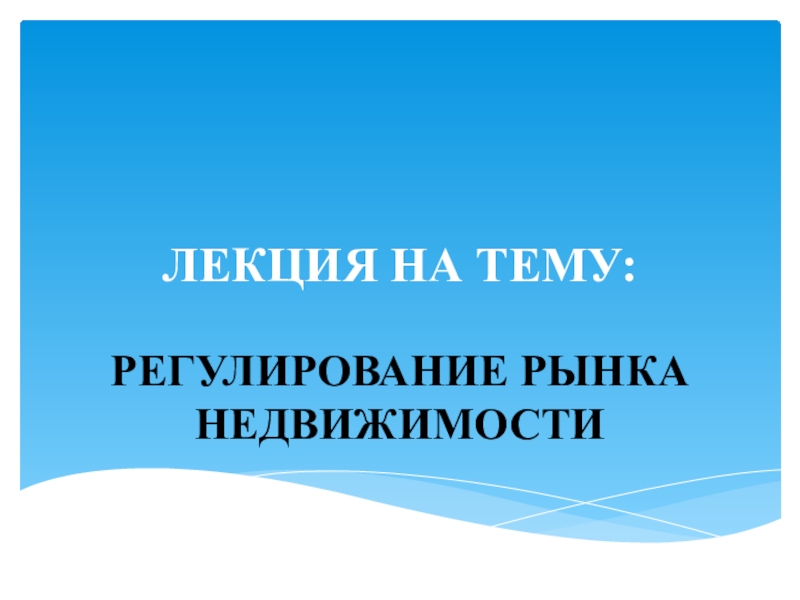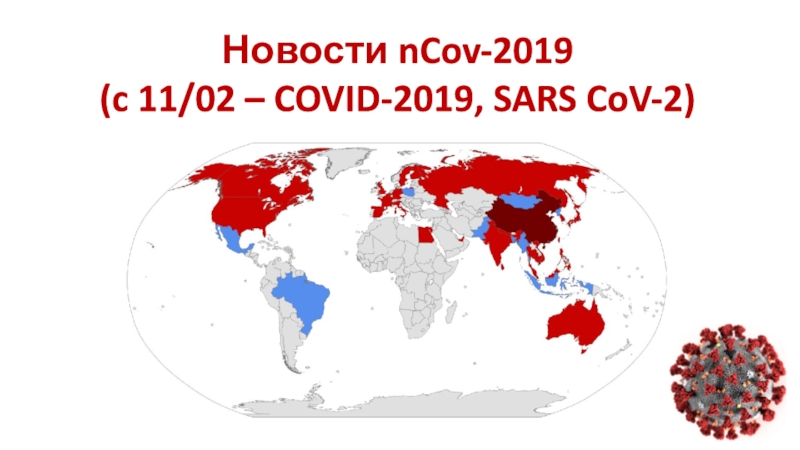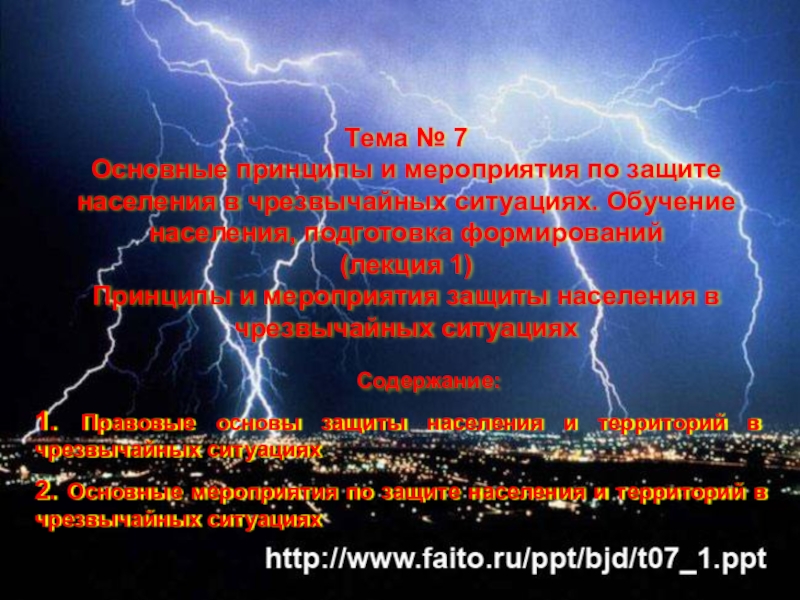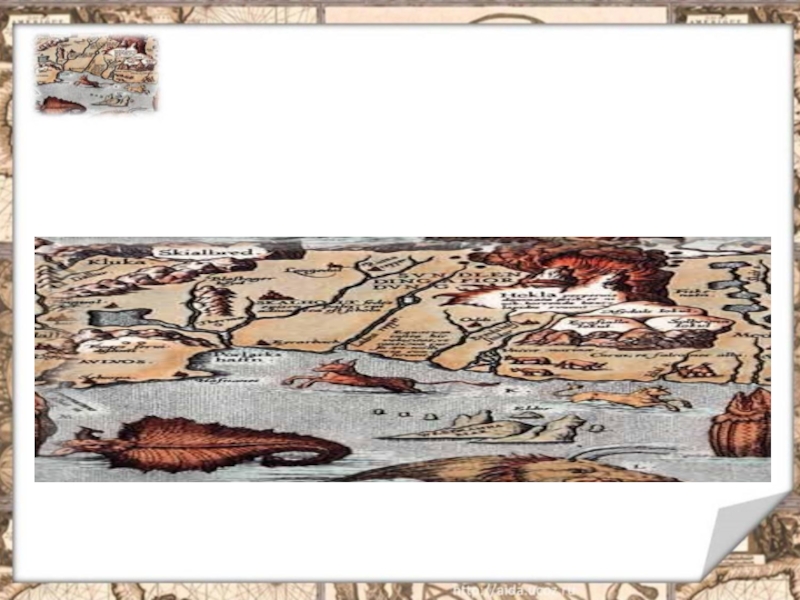Слайд 2Ancient Russia
In the IX century Slavs were 2 major unions:
1.
in the field in the middle reaches of the Dnieper
with the center in Kiev;
2. The word in the center Povolhove in Ladoga. In 862, in Lake Ladoga (according to the chronicle - in Novgorod, which, however, then just arisen or does not exist) called Varangian Rurik to stop local feuds.
Слайд 3His successor Oleg in 882, took Kiev and began to
control the way "from the Vikings to the Greeks" (from
the Baltic to the Black Sea). 882 is considered to be the date of the formation of the ancient Russian state. According to the "Norman theory", the Vikings played a decisive role, but apparently they only accelerated its creation due to previous development. In the second third of the X century. Rurik's son Igor and his widow Olga strengthen the power of Kiev over the Slavs. However, in 945, Igor was killed by rebels Drevlianys
Слайд 4Heyday Kievan Rus reached when the son of Vladimir Yaroslav
the Wise (1019-1054).With him were defeated Pechenegs, it published the
first set of laws - Russian Pravda. Upon the death of his rule, his sons Izyaslav, Svyatoslav and Vsevolod. In 1068 the steppe nomads, Polovtsy defeated their army, and the brothers began feuds. In 1078, after the death of Izyaslav in civil strife in Kiev Vsevolod sat. When he died (1093), strife again intensified.
Oleg Svyatoslavich demanded to return him Chernigov, taken from him by Vladimir Monomakh, son Vsevolod. In 1097 and 1100gg. princes gathered at the Congress weakened the strife. In 1103-1111 gg. princes headed by Svyatopolk of Kiev and Vladimir Monomakh made a series of successful campaigns against the Polovtsy.
In 1113-1125 gg. He reigned in Kiev, Vladimir Monomakh. With him and his son Mstislav the Great observed last flowering of Kievan Rus, which began after the feudal fragmentation.
Слайд 5Political fragmentation in Russia (XII - XIII centuries).
In the
30-40-ies. XII century. princes no longer recognize the authority of the prince
of Kiev. Russia is divided into separate principalities ( "earth"). For Kiev, the struggle of various branches of the princely. Mighty of the land were Chernigov, Vlad-ro-Suzdal, Galicia-Volyn. Their princes were subordinate princes, whose ownership (inheritance) were part of the largest land.
The prerequisites for growth are considered to be fragmented local centers already inconvenienced by OPEC in Kiev, the development of princely and seigniorial tenure.
Слайд 6The struggle of Russia against foreign invasions
in the XIII
century.
In 1206 the Mongol Empire was formed, headed by
Temuchin (Genghis Khan). The Mongols trashed Primorye, North China, Central Asia, the Caucasus, attacked the Polovtsian. On assistance Polovtsy were Russian princes (Kiev, Chernigov, Volyn and others.), But in 1223 on the Kalka they were defeated due to lack of coordination.
In 1236g. Mongols conquered the Volga Bulgars, and in 1237, led by Batu invaded Russia. They ravaged Ryazan and Vladimir land in 1238 pitched at p. Sit Yuri Vladimir, he was killed. In 1239 it began the second wave of the invasion. Pali Chernigov, Kiev, Galich. Baty went to Europe, where he returned in 1242 .
Install the yoke of the Golden Horde - State invaders in the Volga region.
Слайд 7In 1243 the Great Khan made the eldest among Russian
princes Yaroslav Vsevolodovich of Vladimir. After his death in 1246, the
struggle for the Vladimir table, which interfered with the Horde, ruining Suzdal. Vladimir sat Alexander Nevsky. In the political order he helped Russia to impose a tribute to the Horde. In 1262 in Suzdal rebellion broke out against the Mongols, but Alexander persuaded Khan does not destroy the rebellious city. In 1263 he died.
Слайд 8The formation of the centralized Russian state.
Centralized state occurs
when Ivan III (1462-1505). If it were attached to Moscow Yaroslavl,
Rostov, Novgorod, Tver, Vyatka. Ivan III stopped paying tribute to the Great Horde (the largest part of the disintegrated Golden Horde). Ahmad Khan tried to weaken the power of Moscow and started a campaign against it. But after "standing on the Ugra" in 1480, when the Tatars did not dare to attack the Russian troops, Ahmad stepped in the desert and died. Horde's yoke fell.
Слайд 9Russia under Ivan IV
(1533-1584 biennium).
Ivan IV became grand
duke in 1533 in 3 years. Regent was his mother Elena
Glinskaya, and after her death in 1538 boyar rule began, accompanied by the struggle of seigniorial groups. In 1547, Ivan IV was crowned tsar. In 1547 as in Moscow there was an uprising against Glinsky, relatives of the king, oppress the people. It gave rise to a series of reforms - fiscal, military (among other things created strelets army), the creation of orders (future ministries), chosen conducted Rada - the approximate range of the king (AM Kurbsky, AF Adashev Sylvester). a new Code of Law was published (1550), in 1549 it convened the first Zemsky Sobor - Congress of representatives of the main classes of Russia. The reforms strengthened the centralized state.
Слайд 10The main directions of Russian foreign policy and the growth
of its territory in the XV - XVI centuries.
In
the reign of Ivan IV in 1552 after a long siege Russian troops took Kazan, in 1556 was annexed Astrakhan without a fight. In 1558 began the Livonian War for the Baltic states. After Russia's victory over the Livonian Order in the fight intervened Lithuania, Sweden, Denmark, Poland later. In 1571 Crimeans burned Moscow, but in 1572 was defeated.
In 1579 in Russia invaded the Polish King Stefan Batory. After an unsuccessful siege of Pskov he concluded Yam Zapol-sky world (1582). In 1583 the treaty of plussa with Sweden was signed. Livonian War ended in defeat for Russia - Ivan the Terrible had overestimated their strength.
In 1581 began a campaign of Ermak in Western Siberia, which was conquered in 1588 in Siberia an influx of Russian immigrants, was founded fortress Tyumen (1586), Tobolsk (1587), Surgut (1594).
